 |
14 - 18 Mar. 2016 |
The winter school and symposium, which was jointly organized by the Dynamics and
Geometry and Applied
Analysis groups in the math department of the University of Bremen, focused on the concept of chaos. The topic was approached from both the theoretical and applied side, a mix that gave the event a broad but (hopefully) enlightening scope.

A group photo of most of the participants
The main organizers were Maxim Kirsebom, Ivan Ovsyannikov, Jens Rademacher and Marc Keßeböhmer.
University of Bremen's MINTernational guest lecturer program and Dierk Schleicher from Jacobs University Bremen as well as the CRITICS Network and the skew-product DFG network provided funding for this event.
This was the fourth event in a series of winter schools held at the
University of Bremen in the past four years and - with more than 70 international participants - the largest,
hosting main speakers from Russia, Germany and the UK and plenary speakers from Japan, France, Sweden, Italy, Germany, the Netherlands and the US.
The event featured mini-course lectures, research talks, exercise sessions, a poster session and
a public lecture. Further details
can be found below and on the event's website.
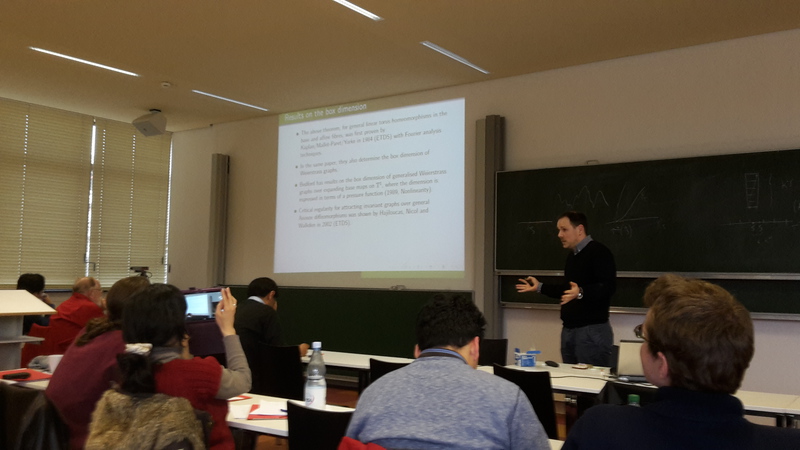
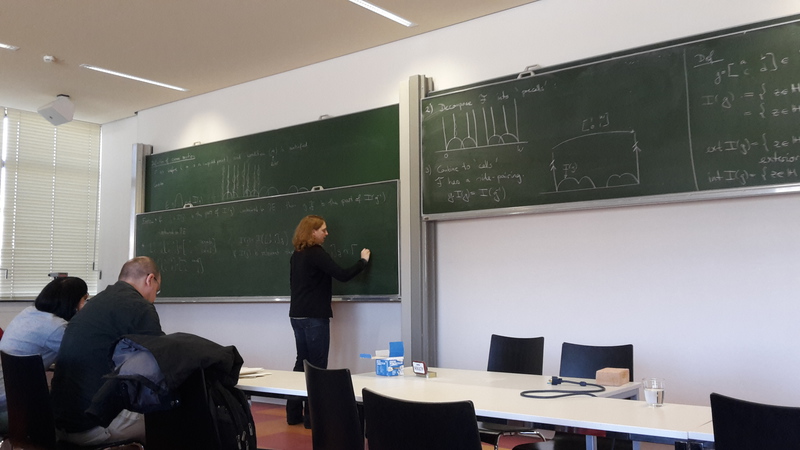
Tobias Oertel-Jäger and Anke Pohl during their respective mini-course lectures
The daily schedule of the event featured different types of talks. The mornings were reserved for the mini-course lectures. These mini-courses each consisted of three 90-minute lectures and one 50-minute exercise session distributed over the week. The exercise sessions were held in the afternoons along with several research talks, each of 30 minutes duration. The mini-courses set the topical direction of the school and the research talks were intended to demonstrate some of the latest research coming out of the theory taught in the mini-courses. The exercise sessions were given to the lecturers as a "free-time" that they could use as they wished, either for exercises, examples, software animations or simply to finish their lectures if they had run out of time. With this mix of talks the schedule wasn't monotone.
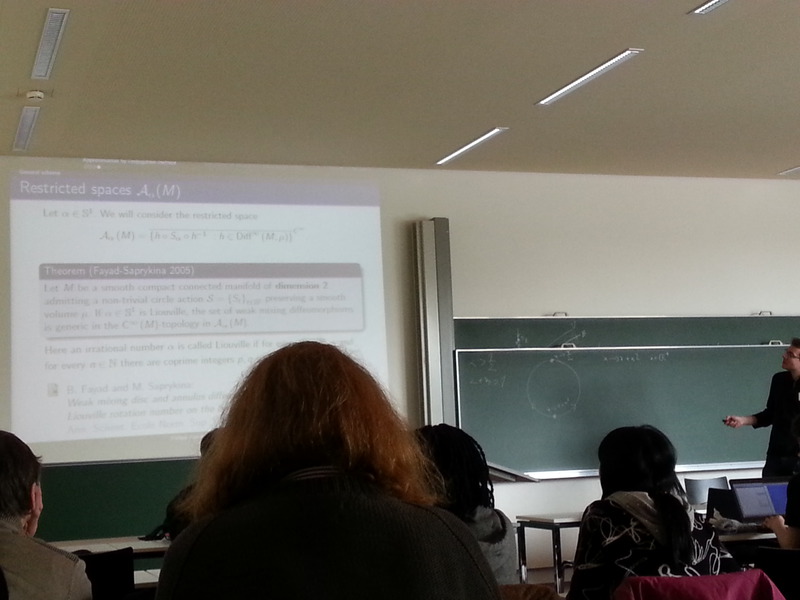

Philipp Kunde and Katsutoshi Shinohara giving research talks
The lecture courses: Anke Pohl lectured on symbolic dynamics for hyperbolic surfaces with cusps and applications to Laplace eigenfunctions and Tobias Oertel-Jäger talked about fractal attractors in skew-product systems. Dmitry Turaev spoke about the dynamics of non-hyperbolic iterated function systems and finally Sergey Gonchenko taught on the topic of contemporary theoretical concepts of dynamical chaos.
The research talks (titles and abstracts here) were held by
Alexander Adam, Nikita Begun, Kurt Falk, Marina Gonchenko, Ale Jan Homburg, Gerhard Keller, Philipp Kunde, Rainer Lauterbach, Sara Munday, Sergey Tikhomirov, Katsutoshi Shinohara and Evgeny Verbitskiy.
A highlight of the week was the plenary lecture given by Jim Yorke. The talk was passionate and full of good anecdotes. Jim Yorke insisted on involving the audience and especially the students in attendance. Most importantly though, the talk gave a brilliant insight into the topic of multi-chaos and quasiperiodicity.

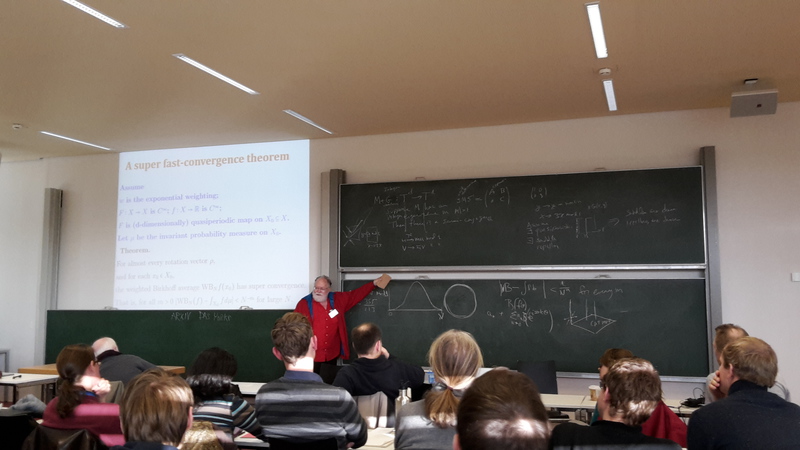
Jim Yorke during his plenary lecture
There were several social activities during the week. A walk through the famous Bremen Bürgerpark followed by a guided tour of the city centre took place on a day where the infamous Bremen weather showed itself from its best side. Two conference dinners gave everybody the opportunity
to try German - and Bremen's own - specialities, and to socialize and have a good time.

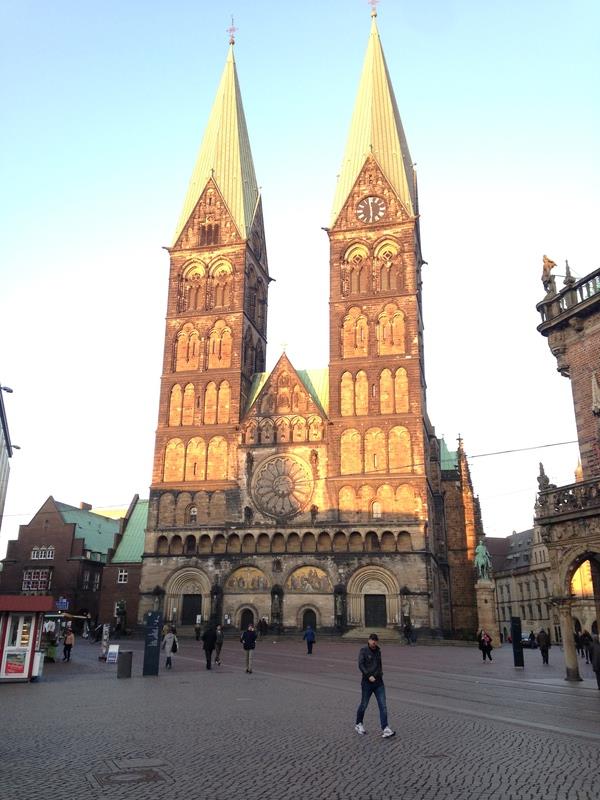

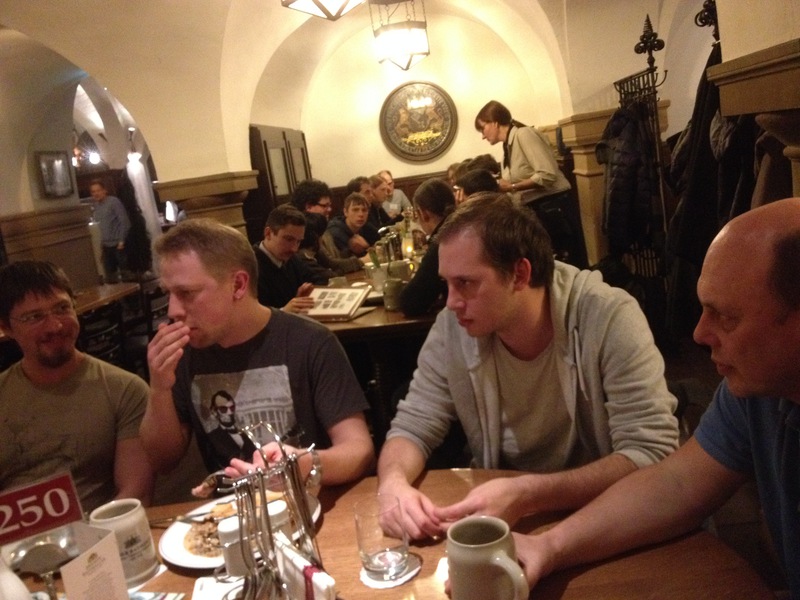
The sun shining on the Universum (Science museum and exhibition), the cathedral (sideways) in the city center of Bremen and socializing at two different conference dinners.
Another highlight of the event was Anke Pohl's public lecture,
which took place in the "House of Science" (Haus der Wissenschaft) in the centre on Bremen. Anke aimed (and succeeded!) at convincing the audience that dynamical systems can be found everywhere in nature. The main example of her talk was billiards, which she used to motivate a lot of the natural questions we ask ourselves in dynamics. She furthermore used billiards to motivate real-life examples like illuminating a (weirdly shaped and mirror-walled) room through a single source of light. The public lecture was followed by a reception with sparkling wine and snacks.

Anke Pohl during her public lecture.
Maxim Kirsebom and Jens Rademacher